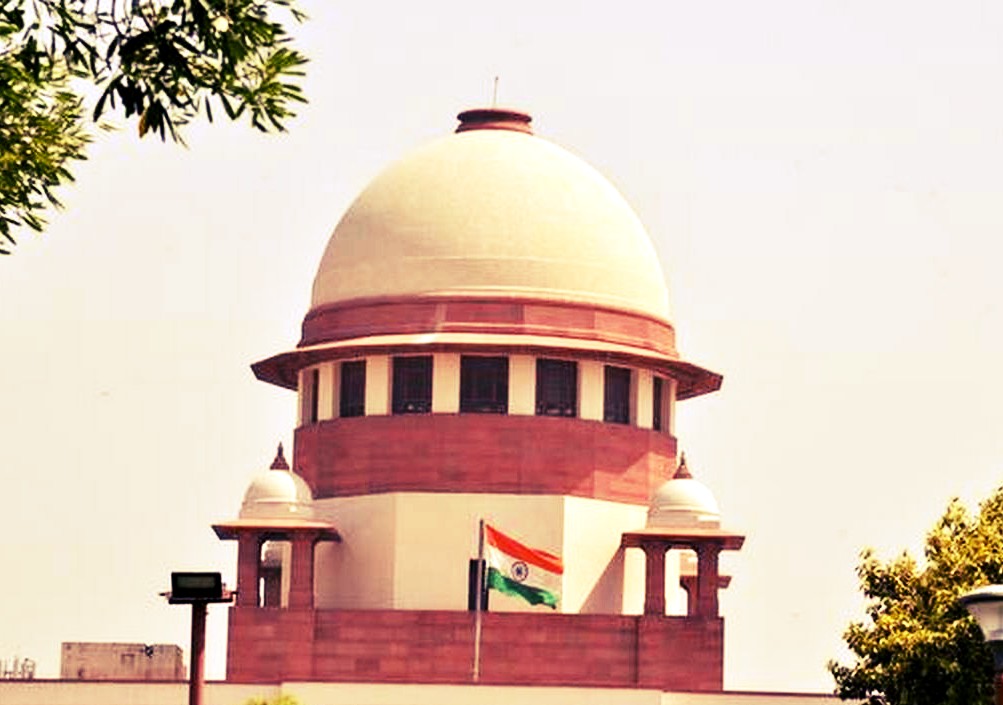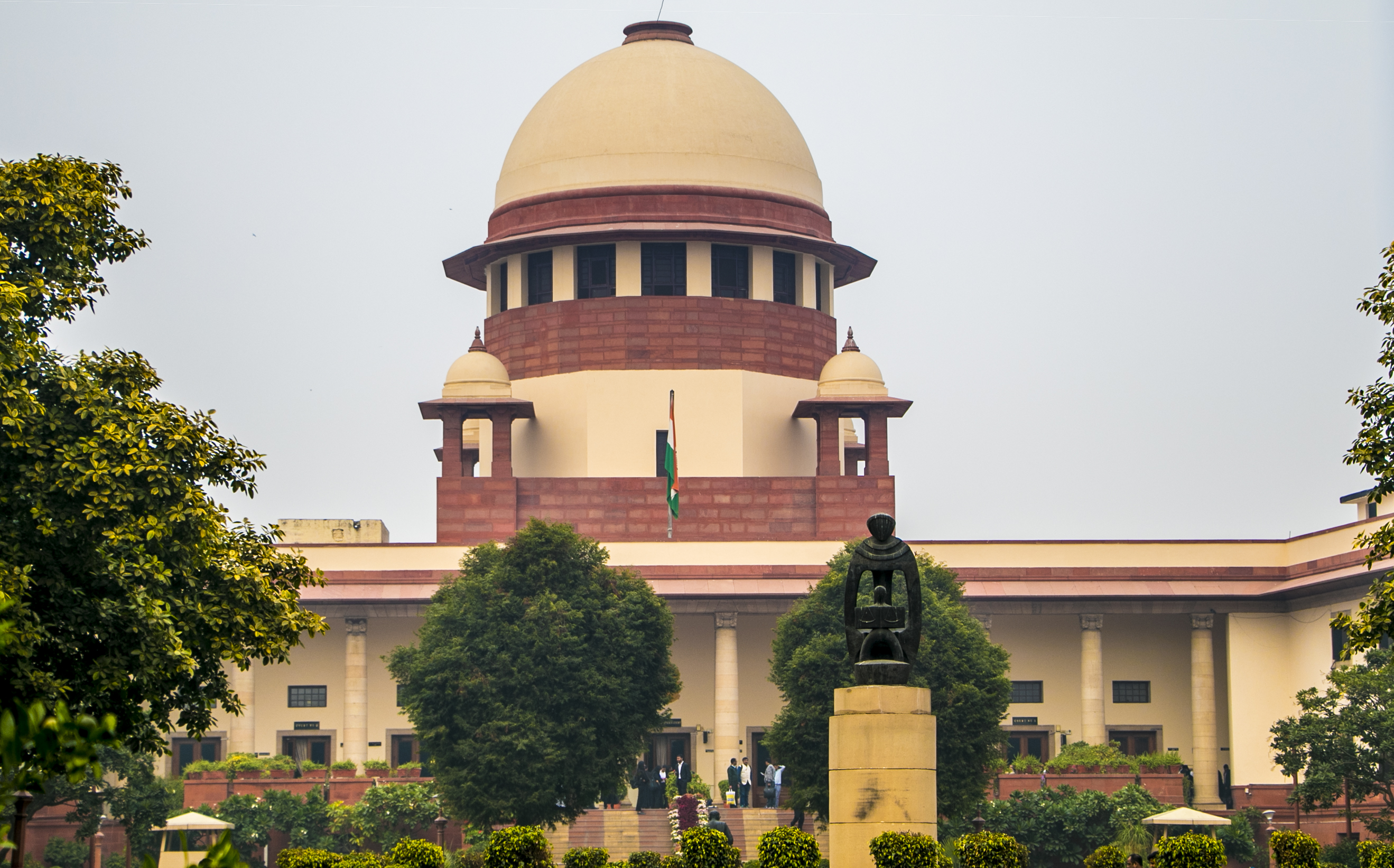Omission to label a notice with the provision under which it is issued would not make it nugatory, if substance thereof is clearly conveyed: Supreme Court
Justices Aniruddha Bose & Bela M. Trivedi [30-01-2024]

Read Order: BAITULLA ISMAIL SHAIKH AND ANR v. KHATIJA ISMAIL PANHALKAR AND ORS [SC-CIVIL APPEAL NO. 1543 OF 2016]
Tulip Kanth
New Delhi, January 31, 2024: The Supreme Court has clarified that ademolition notice carrying no reference to Section 195 of the Maharashtra Municipal Councils, Nagar Panchayats and Industrial Townships Act, 1965, would not be unenforceable.
The appellants purchased the subject-premises in the year 1992 from its erstwhile owner. Both the tenants were inducted by the erstwhile owner of the building in question.In the year 2002, a demolition notice was issued by the Mahabaleshwar Giristhan Municipal Council for a part of the subject-building. This notice constituted one of the grounds on which the appellants wanted to evict the respondents under the Maharashtra Rent Control Act, 1999. This notice was followed by three subsequent notices.
Notices for eviction were subsequently sent to the tenants in each appeal and delivery of vacant possession was asked for. As the eviction notices did not yield any result, the two suits were instituted and were decreed by the Trial Court, which was sustained by the Appellate Court. In the Civil Revision Petition, the tenants succeeded as the judgment and decree were set aside.
The Commissioner’s report on the necessity of urgent demolition of the tenanted portions was not fully conclusive but his view was that the entire building was about 97 years old and life of the building was over. The Trial Court opined that the landlord was the best judge of his own requirement and the issue of bona fide need was decided in favour of the appellants.The Appellate Court sustained the judgment and overturned the Trial Court’s finding on there being no default in payment of rent on the ground that the provisions of Section 15(3) of the 1999 Act could not support the tenants case.
The Revisional Court on analysing the provisions of Sections 15 and 16 of the said Statute set aside the judgment and decree and allowed the revision applications of the tenants.The appellants-landlords assailedthis judgment delivered by a Single Judge of the Bombay High Court invalidating eviction decrees against two tenants in respect of two portions of the same building.
Dealing with the claim based on Section 16(1)(h) and (i) of the 1999 Act, the Division Bench of Justice Aniruddha Bose& Justice Bela M. Trivediopined that the statutory mandate for the Court is to test the question of part vacating. Neither the Trial Court nor the Appellate Court chose to analyse this requirement before directing eviction. Moreover, the initial demolition notice identified a part of the premises requiring demolition and the Commissioners report was also on that line.
Sub-section (2) of Section 16 relates to reasonable and bona fide need in terms of Section 16(1)(g) and if the requirement is in the aforesaid terms, then the Court has to be satisfied having regard to all the circumstances of the case including the question whether other reasonable accommodation is available to the landlord or the tenant. The Bench further observed that this provision essentially incorporates the principle of comparative hardship, as such a test has come to be known in tenancy jurisprudence.
The Top Court affirmed the view taken by the High Court that there was no satisfaction in the manner contemplated in Section 16 (2) of the 1999 Act as far as bona fide need in terms of Section 16(1)(g) was concerned. In the impugned judgment, the High Court had dealt with in detail the list of properties which were with the landlords and on that basis gave its own finding in that regard. Section 16(6) also mandates satisfaction of the conditions stipulated in sub-clauses (a) to (d) thereof. The Bench also didnot find any flaw with the judgment of the High Court to the extent it rejected the claim of the landlord for non-compliance of the aforesaid provisions.
It was further asserted by the Bench that Section 16(1)(k) permits recovery of possession of tenanted premises on the ground that the premises are required for immediate purpose of demolition ordered by any municipal or other competent authority. In the present case, the respective suits were instituted seeking recovery of possessionunder this provision. The High Court found fault with the demolition notice as it carried no reference to the said provision (Section 195 of the 1965 Act). This flaw, by itself would not make the notice unenforceable, the Bench noted while further stating, “Omission to label a notice with the provision under which it is issued would not make it nugatory, if substance thereof is clearly conveyed.”
The Bench accepted the appellant’s argument that the Court trying an eviction proceeding under the aforesaid provision has very limited role in determining as to whether demolition is really necessary or not, but it does not automatically follow therefrom that the Court would mechanically adopt the view of municipal authority of there being urgent need of demolition. The conditions under which a landlord can bring an eviction action under clauses (i) and (k) of Section 16(1) are different in their operations.
On behalf of the appellants, it was brought to the Court’s notice that after the first demolition notice on 23.01.2002, three other notices were issued. The two fact finding Courts did not consider these notices as they did not form part of cause of action and the said facts were admitted to be brought on the record by way of amendment of plaint or otherwise. The Bench opined that these notices would run their own course and it would be up to the authorities to take such steps as may be permissible in law in respect of the subsequent notices. The tenants shall also be entitled to question the legality thereof, it added.
Thus, dismissing the appeals, the Bench held, “We are conscious that the Revisional Court was examining a judgment and decree already tested by the Appellate Forum and on facts, decree was made. Ordinarily the Revisional Court ought not to interfere with findings on fact. But in the judgment under appeal, we find that the Revisional Court has fitted the facts with the legal provisions and found that there was mismatch on the basis of which the judgment and decree were set aside. We have been taken through the judgment of the Revisional Court and do not find any flaw that needs re-appreciation.”
Sign up for our weekly newsletter to stay up to date on our product, events featured blog, special offer and all of the exciting things that take place here at Legitquest.




Add a Comment